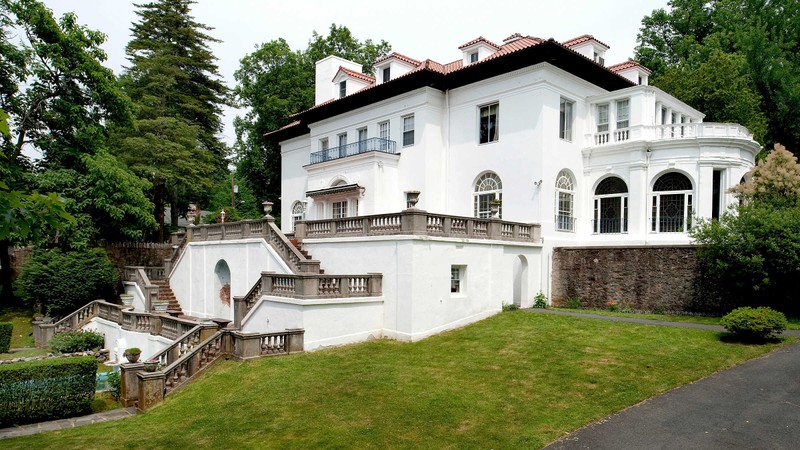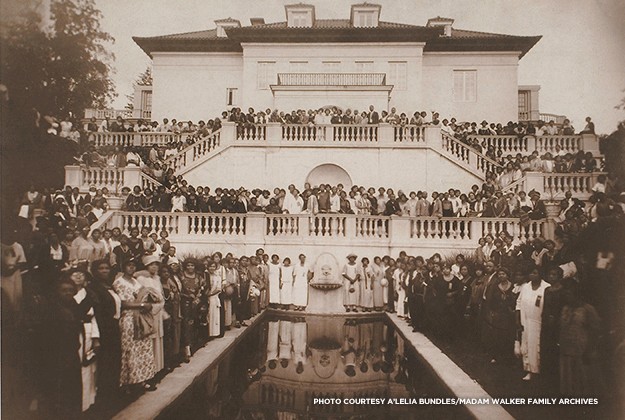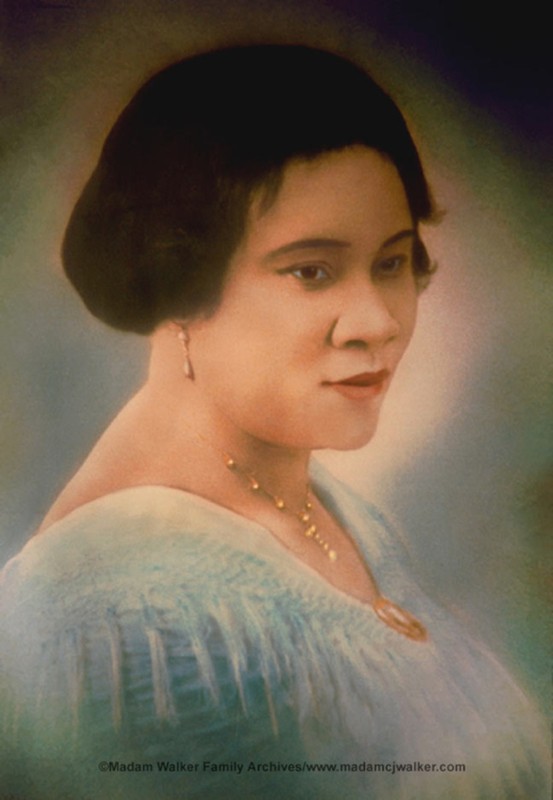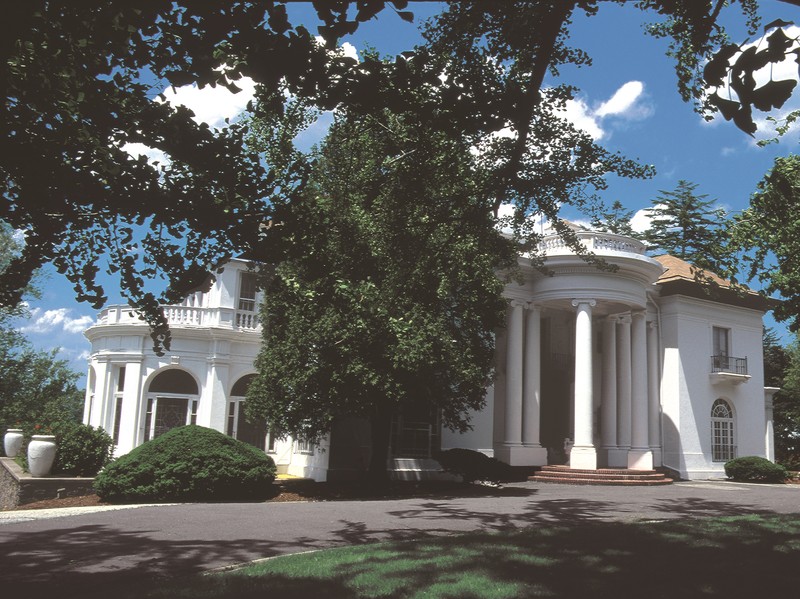Villa Lewaro, home of Madam C. J. Walker
Introduction
Text-to-speech Audio
Images
This is the rear elevation of the restored historical site of Madam C. J. Walker's residence, "Villa Lewaro" in Irvington, NY.

This photo of Villa Lewaro came directly from the Walker family's archives. This portrays sales associates posing during the 1924 annual Convention of the Madam Walker Beauty Culturists Union.

This is another image from the Walker family's personal archives. It is a portrait of Madam C. J. Walker herself.


Backstory and Context
Text-to-speech Audio
Madam C. J. Walker was born in Delta, Louisiana under the name, Sarah Breedlove. Her parents and some of her siblings had been slaves, and in her early life, she worked alongside her family in the cotton fields. As a young woman she started with a washtub and was promoted to the kitchen. Her parents died when she was 7 years old; she married at 14; became a widow at 20. In order to support herself and her daughter she, " promoted myself into the business of manufacturing hair goods and preparations....I know how to grow hair as well as i know how to grow cotton.."
She created the “Walker System” and later worked to market and sell custom hair care products specifically for African American women. One of the first proponents of, "Black is beautiful." Walker employed numerous women as “beauty culturalists” whom she would train and send out as door-to-door saleswomen. As her clientele grew, so did her notoriety and fortune. Although it is difficult to determine "firsts" in history with precision, it seems likely that Walker became the first Black woman to earn and amass a fortune of over one million dollars in the United States.
In 1918, Madam Walker hired African American architect Vertner Tandy to build her dream house on four acres in Irvington, New York. He designed her a 30-room Roman villa in white stucco, red tiled roof, with a two-story, semi-circular portico visible from Broadway. She decided to name the mansion Villa Lewaro lovingly after her daughter A’Lelia Walker Robinson, using two letters from each of her names. The home caused some local controversy, as whites living in the surrounding area were not favorable to having Walker as a neighbor.
Walker was leading contributor to the NAACP and other Black institutions. She also offered scholarships for African American women and she dedicated much of her latter life to supporting causes that strengthened African American businesses and communities.
Sources
Bundles, A'lelia . Madam C.J. Walker. American History. August 1st 1996. 42 - 48.
Dozier, Richard. Villa Lewaro, Anne E. Poth House. National Register of Historic Places Inventory-Nomination Form. Published October 30th 1975.
Williams, Gray. Picturing Our Past, National Register Sites in Westchester County. Elmsford, New Yori. Westchester County Historical Society, 2003.
